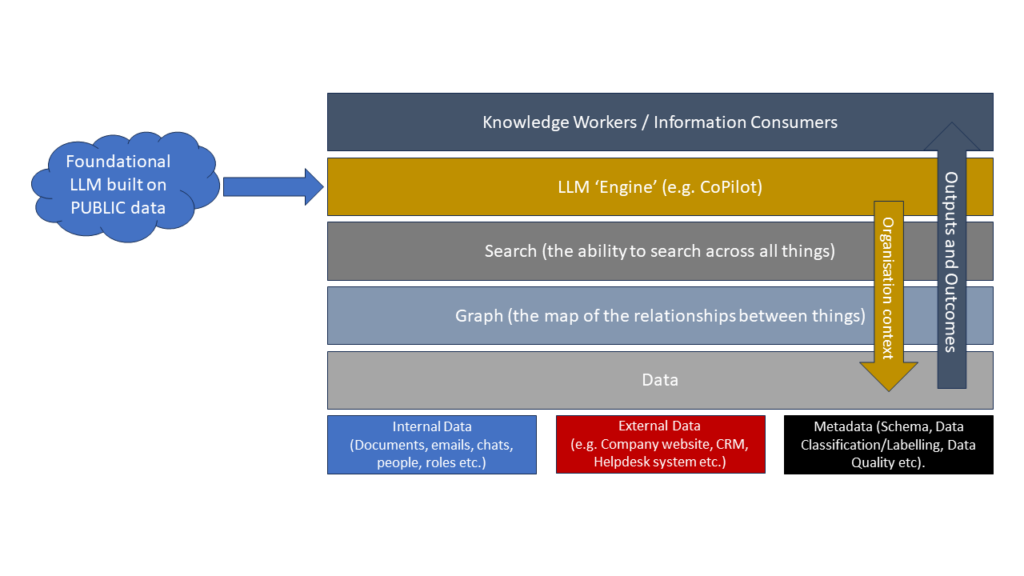
Managing the future of Connected Work in the Enterprise

There is (finally) the glimmers of good news about potential vaccines for Covid-19. However, in 2021 managing change will be the harsh reality for organisations in 2021. Organisations will need to manage change in how their organisations manage and use data. There are a number of drivers for this need to manage change.
There will be the need to adapt and change in response to regulatory changes such as the fall out from the CJEU decision on Standard Contractual Clauses or the growth in data protection laws world-wide. The challenges of cross-border data transfers post-Brexit, and the increase in information requirements for customs and taxation purposes arising from Brexit will also be a factor for many. Finally, organisations will need to start managing the change necessary to make Connected Working a more sustainable part of their business model.
After all, very few organisations were ready to make connected working or remote working their default operating model back in March. But research has shown that, having experienced it, a large proportion of the workforce globally wants to be able to work in a connected but remote way into the future. As I have written previously, we were forced to jump to the end of the change story back in March. We need to navigate back and manage that change journey. If we do that, we can do the things that we need to do to keep that ending a happy one.
We discuss Brexit and Cross-Border data transfers elsewhere in our blogs and webinars. In this post, I want to look further at the data strategy opportunities of Connected Work.
In god we trust, everyone else must bring data!
Data from recently published Irish research is thought provoking.
- 83% of respondents in April’s survey wanted to work remotely post-Covid. In October, this was 94%.
- 51% of respondents in April had never worked remotely before. 78% of them wanted to continue post-Covid. 49% hadn’t worked remotely before in October, but 92% of them wanted to be able to continue doing so.
- Fewer respondents were working remotely full time, however.
So, the idea that people can work in a connected way from locations that are remote from the traditional “office” has begun to be accepted. But, as Tom Peters puts it:
The greatest difficulty in the world is not for people to accept new ideas, but to make them forget old ideas
Managing Change back to Normal(?)
While the news of potential vaccines is welcome, the harsh reality is that developing the vaccine the first part of a long chain of things that needs to happen before we can declare “mission accomplished”. At a minimum we need to clear the hurdles of logistics and distribution. And that is before we tackle the misinformation about vaccines and public health. So, the future of the organisation will be a connected one for the foreseeable.
- Short term: Organisations will need connected working capabilities due to uncertainty about vaccine availability or effectiveness.
- Medium term: Organisations will need connected working capabilities to manage and mitigate risks of future lock downs
- Long term: Organisations will require connected working capabilities as part of business continuity planning and as a means of attracting and retaining staff.
There will be economic and social pressures to encourage a return to the traditional office. The old model where people are co-located, with overlapping schedules, will still be important. So, what will this change be that organisations (and society) will be managing next year?
Prediction: There will be a Bell Curve!
A fundamental of change management is that change is never absolute. There will be a bell curve of long term adoption of Connected Working both within organisations and across industry sectors.
Some people will return to the traditional co-located working space , with overlapping working hours, under the control of the organisation. Many more will not. We are already seeing organisations that have a globally dispersed workforce adapting to a ‘remote by default’ model. Whether the majority of your staff are on the left or right of the bell curve, a seismic strategic shift has occurred. For organisations to succeed in this environment they will need to get to grips with managing their information assets as much, if not more, than they would have historically managed their physical office locations.
To put it another way: the investments that organisations used to make in fitting out and maintaining traditional office space will need to be matched by an investment in the fitting out, maintenance, and upkeep of their information environments. In this new ‘office’, staff will need different skills. And this is a change management challenge.
Manage Change in the Asynchronous Office
In a Connected Working office your staff may not have overlapping schedules. Greater flexibility in how to manage their working day was one of the benefits identified by the NUIG research. This is a big difference to the ‘traditional’ office where people’s work schedules broadly overlapped. In that ‘synchronous office’ model, data related questions, project issues, or technical issues could be resolved in person. As a result, a lot of knowledge about data in organisations wasn’t always codified. It remained ‘tacit’, locked in the head of a person.
In a Connected Working environment, management changes because there is less certainty of overlap. So, when data related questions arise or technical issues crop up with tools or technology, the dependence on knowledge that is in a staff members head to solve the issue can become an impediment to delivering on objectives. I call this the “Asynchronous Office”. In this office, the historic ad hoc approaches to managing data can become unstuck quickly. The absence of documentation, or the poor management and control of electronic records, can lead to delays or mistakes. Staff need to have a better understanding of data and of the tools they use to process it so they can self-solve problems.
Unfortunately, the vast majority of organisations continue to suck at these unsexy but incredibly important aspects of data management.
For example, with one client we have worked with recently it took a number of days, and a number of emails to various parts of the organisation and some suppliers, to get an answer to a very simple data question. The question posed was something that could (and should) have been defined and documented in the client’s data governance framework. (It is now).
Data Strategy for the Asynchronous Office
The initial data focus for many organisations implementing Connected Working is on ensuring the security of data and equipment. Another initial focus is ensuring adequacy of connectivity. Every office needs to have the equivalent of locks on the doors. And being “connected” is an important part of Connected Working. However, an effective data strategy for the Connected Workplace needs to consider more than just these foundational questions.
It is important to approach the data strategy and change management planning for Connected Working in a structured way. To be sustainable and empower your teams to work in an ‘information-enabled’ manner, it go beyond a technology focus. Secure access to the network and access to systems to perform tasks are one level up from “Connectivity” on the Remote Worker hierarchy of needs. In the Asynchronous Office, the organisation needs to change to ensure that staff are able to manage and use data effectively once they can get at it. That is at least as important as making sure that people who shouldn’t get at the data cannot.
Irrespective of where on the bell-curve your organisation is, the shift to Connected Working at any level needs a commensurate evolution in how the organisation manages and governs data. Empowering and enabling Connected Workers means an evolution in how knowledge workers in the organisation think about and understand data.
Managing Change with Frameworks
Data Management frameworks such as the DAMA DMBOK or the CMMI DMM provide some structure for the kind of issues that organisations of all sizes should consider as part of their Data Strategy for the Asynchronous Office or Connected Working. For example:
- Metadata Management: Do you have a consistent single glossary of terms that the organisation uses and that describes how important data is derived? New hires need to be able to learn the lingo of the business. Why not write it down?
- Master Data Management: Where does the important information for the organisation sit, and what is important?
- Data Governance: How much autonomy does the remote worker have over how they handle data? Who can make decisions on changes?
- Records and Content Management: How does paper that comes into the organisation get scanned and stored? What physical paper records need to be kept? Where are they stored?
In terms of data literacy within the Connected Working organisation, staff need to be able to use technology tools to do their jobs. But they also need to understand data. They need to understand how data problems are caused and should be fixed in the organisation.
Sustaining and thriving in the era of the Asynchronous Office and Connected Working will require a clear focus on data as critical resource in the same way office buildings have been seen. It will also require robust organisational change management.
How Castlebridge Can Help
- Castlebridge can help organisations of all sizes understand their mission-critical data capabilities, and build an action plan for strategic change. Get in touch if you want to find out more.
- If you are not sure if you want to commit to a large engagement, we can also assist with Consultant Clinics or Advisor Clinics. These are one-hour intense sessions to help you understand your issues and develop a strategy.
- Check out our recent blog posts for insights and ideas on Connected Working and Data Literacy.
We are running a webinar on the 25th November on Connected Working and Data Strategy. Details can be found HERE.



